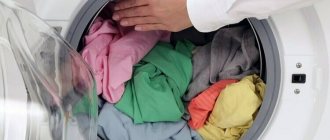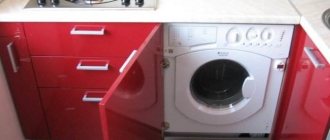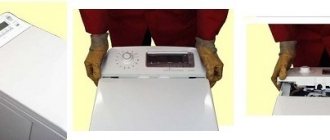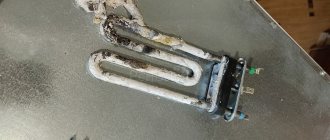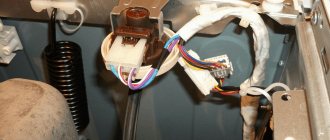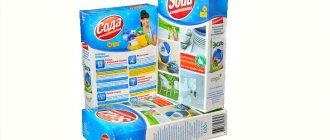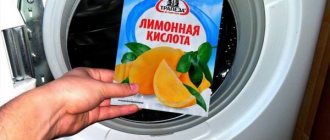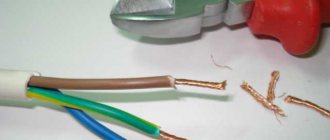Our compatriots had the opportunity to buy a washing machine relatively recently, after their production was launched at the Riga plant in 1950. Nowadays there are washing machines in almost every home. We recommend that you familiarize yourself with the rating of washing machines by price and quality.
All washing machines can be divided into two main types:
- from vertical;
- with front loading.
Both types are in demand, and the final choice depends on a number of factors that should be considered before purchasing a washing machine.
Which machine to choose: top-loading or front-loading?
In order to decide which machine to choose, it is necessary to consider the features of each type.
The hatch for loading laundry on a front-loading machine is located on the front panel. As a rule, the hatch door is made of glass and has a round shape. If the hatch is opened, you can immediately gain access to the drum.
For top-loading washing machines, the hatch is located on top and can rather be called a door. The design of the door allows it to be folded in half, which is convenient when loading and unloading laundry. In some more expensive models of top-loading washing machines, the drum has a double closure - with an upper door and an additional hatch. After finishing the wash, the drum is rotated so that the hatch can be conveniently opened. However, not all “verticals” have this function, and if it is missing, the drum has to be turned manually, which is not very convenient.
Washing machines with vertical and front loading also differ in their sizes, the former are lower compared to the latter, and their drums are smaller. This feature of the “vertical” allows you to buy a washing machine when there is not enough space to install a “front” washing machine.
Interesting: top-loading washing machines can be automatic, semi-automatic and mechanical, but vertical ones can only be automatic.
Thanks to the large size of the body and drum, a front-loading washing machine can wash more clothes at one time.
In turn, in a top-loading washing machine you can wash a little more than the weight of laundry at a time. Thanks to its shock absorbers, the machine can easily withstand a slight overload.
“Vertical” ones are, in principle, more reliable compared to “frontal” ones; they break much less often, thanks to the better distribution of centrifugal force.
If a vertical machine can be loaded during washing, then you can “throw” laundry into the front machine only if the manufacturer has provided such a function, otherwise this cannot be done.
The controls for both types of washing machines are approximately the same; the panel itself is located on top-loading machines, and on the front in front-loading machines.
There are no particular differences between the machines in terms of washing quality; each of them washes well if the mode and washing cycle have been chosen correctly.
As for functionality, both “front-facing” and “horizontal” models have models with a basic set of options and with a large number of them.
“Front-mounted” units can be installed in a cabinet or under a countertop, but “vertical” units cannot be installed. In addition, the top surface of a front-loading washing machine can itself serve as a “countertop” on which you can place or place something.
Vertical machines are more convenient because you don’t have to bend over when loading laundry. However, if you place the front-facing machine on a small pedestal, you can also load laundry without bending over.
A vertical machine can be stopped and opened during washing, but a frontal machine cannot.
What is the difference between hatches of models with different types of loading?
Let us immediately note that neither the type nor the design of the drum, for the most part, has a significant impact on the quality of washing and spinning. However, by comparing front-loading and top-loading washing machines, you can determine which model is best suited for your home or apartment.
Hatch in front-type cars
Their hatch (with a diameter of 23 to 33 cm) is closed by a plastic or metal door with a glass window. During washing, a special lock secures it firmly in the closed position. And only when the program is completed, the door can be opened (the automatic lock will be unlocked). For ease of use of the machine, the size of the hatch is important - a large hole is easier to put and remove laundry. It is also important how wide the door can open - for simple models, its opening angle can be only 90 or 120 degrees, and for more “advanced” ones - 180 degrees.
The rubber seal, called the hatch cuff, fits tightly around the entire perimeter. The absence of gaps and high-quality material does not allow a drop of water to leak out. There is an opinion that the rubber cuff can quickly tear, but this is not at all true. Of course, it can be damaged, but this usually happens when the device is handled extremely carelessly.
Rubber cuff for sealing the hatch.
Hatch in vertical machines
Top-loading washing machines may be structurally different from each other. Most often there are models with a drum located horizontally. On the sides it has two symmetrical shafts on which it is attached. This design is in particular demand among European (especially French) consumers. And Russians also often buy just such models. Loading and unloading of laundry in them occurs in two steps: first, the outer hatch opens, and then the drum.
The drum has doors with a simple mechanical lock. But after washing, these doors do not always end up opposite the hatch - this is often the case with simple models. Manually turning the drum to the desired point is not much pleasure, and the developers took this into account. More expensive new models are equipped with a “drum parking system”. This means that after stopping the drum will always have its flaps facing the hatch opening.
Drum door lock.
Open drum flaps of a top-loading washing machine.
Less common among us, “American” large-volume models, allow you to load 8 - 10 kg of dry laundry. They do not have a hatch in the drum, which stands vertically, but there is a special activator in the middle. There are also models of the “Asian” type, which also have not taken root with us. They also have a vertical drum, not a horizontal one, but its volume is small. Often, such devices are equipped with an air bubble generator, which helps wash cleaner. In any case, that's what the manufacturers say.
Automatic washing machine of activator type with vertical loading.
It is very convenient that with top-loading machines you can pause the wash at any time to add items. And water will never spill onto the floor - because the lid opens upward. This option is useful for thrifty housewives who can put dirtier things first, and then less dirty ones. This will take less time, powder, and electricity.
Drum capacity
At one time, you can load from 4 to 10 kilograms of dry laundry into the drum of a top-loading washing machine. The more laundry you can load, the larger the drum and the washing machine itself. As practice shows, a washing machine with a drum designed to wash 4 kilograms of laundry will be enough for a family of 2-3 people.
If a family consists of 5-6 or more people, then to wash their clothes it is best to buy a washing machine with a larger drum.
If you have a habit of “hoarding” dirty laundry and washing it once a week or even less often, then you will have to choose a washing machine with a large drum.
Video. How to choose a washing machine
The washing machine belongs to the category of essential household appliances. By type, devices are divided into two main types: frontal and vertical. The design of these machines is completely different, and it can be difficult to determine which model is more suitable for certain needs. Let's figure out which washing machine is better - vertical or front loading. We will also consider what their differences, advantages and disadvantages are. Large equipment is not cheap and is purchased for more than one year, so you should choose wisely.
Energy saving class
Washing in a machine requires both water and electricity, which you have to pay for. Therefore, when choosing a washing machine, you need to pay attention to its technical indicators, more precisely to the letter marking, which means:
- “A+++” – electricity consumption for washing one kilogram of laundry is up to 0.13 kW/h per kg of laundry
- “A++” – up to 0.15 kW/h
- “A+” – up to 0.18 kW/h
- “A” – up to 0.19 kW/h
- “B” – up to 0.20 kW/h
- “C” – up to 0.27 kW/h
- “D” – up to 0.31 kW/h
It should be noted that the cost of the most economical washing machines will be higher. However, during operation, this household appliance pays for itself in full with smaller amounts in bills for consumed electricity.
Spin class
The higher this parameter, the drier the laundry will be after spinning. The spin class also has letters; each class has its own speed and the higher it is, the drier the laundry will be. The “fastest” washing machines make up to 1.7 thousand drum revolutions per minute, the “lowest” - only 400. As a result, after spinning the clothes in a class washing machine:
- "A" will remain less than 45 percent moisture
- "B" - 50 percent
- "C" - 60 percent
- "D" - 70 percent
Some modern machines have an anti-crease spin option, and in this case, you don’t have to iron things after drying.
Options, functions, programs
Today, even the simplest top-loading automatic washing machines have about a dozen programs; more expensive models are more functional. Mandatory programs include:
- modes for washing items made from certain types of fabrics;
- soak;
- additional rinse;
- manual water temperature selection;
- spin speed adjustment, also in manual mode;
- delaying the start of washing for several hours, the number of which can also be selected manually;
- protection from children.
More technically advanced models of automatic washing machines may have a very useful self-diagnosis option, with which you can find out the failure code. Thanks to this, you can understand what exactly is broken in the washing machine, is out of order and requires repair.
Some models of washing machines have a drying mode, which is again very convenient, especially if there is no place to dry the laundry at home after washing. In addition, using this mode you can wash and dry bedding, jackets, soft toys and so on.
Which one is better to choose and for what purposes?
So, we come to the main question - which automatic machine is better - a narrow one with vertical loading or a more familiar one with front loading?
It is impossible to objectively make a choice in favor of any one type of machine. Both have their advantages. This dilemma must be approached subjectively, taking into account individual living conditions.
For front-facing machines, the hatch, containers for detergents and the control system are located on the front panel, and the top panel is completely flat and free. In the kitchen, such a machine can be placed under the countertop or in a cabinet. Even if you install it separately, the upper space can be used as a cabinet, placing smaller household appliances or other things on it.
Vertical washing machines are rarely installed in kitchens: they are impractical there. They cannot be built in, and you cannot place anything on top either. But for a small bathroom they are ideally suited, significantly saving space.
Otherwise, you should focus on the functionality and capacity of each specific model.
Both among the “vertical” and among the front-facing devices, there are machines with only a basic set of programs and options and more “sophisticated” ones with advanced functions. You can find a good washing machine that meets all your needs among any type of design.
Some people are interested in the question of which company is better. The one that has been on the market for a long time and has a certain reputation is always better. But each company has more and less successful models in its lines, so it is still recommended to consider each specific machine separately.
If you choose a model that can be hidden under a countertop or in a cabinet, then check out our rating of built-in washing machines.
Drum materials
Today on sale you can find washing machines with drums made of:
- of stainless steel;
- enameled steel;
- plastic.
It is noteworthy that recently there are more and more washing machines with plastic drums, or rather with carbon tanks. This material is considered to be of high quality, reliable and durable; in addition, it does not rust, does not deform and has a perfectly flat surface, which steel tanks cannot boast of. However, plastic tanks of more budget models are made not from carbon, but from polyplex (Poliplex), which is less strong and durable.
How to save money on buying a top-loading washing machine?
An excellent way to save money is to eliminate unnecessary options. To do this, you just need to think carefully about which programs you definitely need, and which ones you can easily do without. As a rule, less functional washing machines have all the basic functions and are much cheaper.
In addition, you can save money by purchasing a washing machine with a drum capacity that will be enough for you. For example, if your family consists of 2-4 people, then a washing machine designed to wash 4-5 kilograms at a time will be enough for you.
Important : the smaller the drum volume, the lower the consumption of water and electricity during a full load and wash cycle.
Many experts do not recommend buying machines with a high drum spin speed and claim that one thousand revolutions per minute will be enough.
When choosing washing machines based on price/quality ratio, preference should be given to products from well-known brands, such as:
- German – Bosch
- Italian – Indesit and Zanussi
- American – Whirlpool
- Slovenian – Gorenje
- South Korean - Samsung and so on.
There are Russian-made washing machines; as a rule, they are of the activator or mechanical type. These include products manufactured under the names:
- Renova
- Fairy
- Assol
How to choose the best top loading washing machine?
It is difficult to answer the question of which washing machine can be considered the best, since everyone has their strong and not so strong sides. However, experts compile their ratings and update them regularly. So the current rating at the beginning of 2021 looks like this:
Design and design differences between vertical and front loading washing machines
The main design difference between “frontal” and “vertical” is the location of the loading hatch. For frontal units, the hatch was located on the front panel of the car, and the lid opens to the side.
Vertical models are equipped with a hatch on top. The lid of such washing machines opens upward. Many people remember that just two or three decades ago there were only top-loading machines on the market. Front-mounted devices appeared not so long ago, but quickly replaced “vertical” devices in popularity.
Both types of machines have washing drums that rotate in a vertical plane. To load laundry into the front model, simply open the hatch. For vertical devices, the process of loading and unloading laundry is a little more complicated: first you need to open the top cover of the housing, then open the lid lock on the drum itself. In addition, the drum can stop in any position after washing, and sometimes it still needs to be turned to get to the lid. There is nothing difficult in such manipulations, but when a person is accustomed to the “front-facing” washing machine, a vertical washing machine may seem inconvenient to him.
Some users find front loading more comfortable, while others prefer loading the machine with dirty laundry from the top. However, neither consumers nor experts find significant differences in the quality of washing.
How well the machine will handle different stains on different fabrics depends more on the specific model and its features than on the placement of the lid. To accurately decide which is better – a vertical hatch or a horizontal one, let’s take a closer look at the parameters of different types of machines.
Renova WS-50PT
This semi-automatic washing machine model has dimensions of 74x43x88, it is designed to wash 5 kilograms of laundry, its spin speed is 1350 rpm.
Pros:
- Relatively low cost up to 5 thousand rubles
Minuses:
- Short length hose
- Fragile plastic top cover
Rainbow SM-5 White from Valtec
The semi-automatic washing machine of joint Italian-Russian production has a mechanical control panel and very compact dimensions, while it can wash up to 5 kg of laundry. The cost of this model does not exceed 4 thousand rubles, which makes it the most budgetary on this list.
Pros:
- Low price
Minuses:
- No spin mode
Technical characteristics and popular models
Vertical washing machines are semi- or fully automatic models with mechanical or electronic control. For the former, part of the operations (filling/draining water, spinning, drying) is performed manually, while in automatic machines all these stages are included in the washing programs. The water supply (up to +50 degrees) in semi-automatic machines is connected through the pipes on the top panel, washing program is only 1 or 2.
More expensive automatic models are installed permanently and connected to the water supply network and sewer drain. These machines are designed for a full washing cycle with filling with water, heating, rinsing, spinning. The number of programs reaches 14-16, delayed start and leakage protection functions are provided. Automatic and semi-automatic machines are equipped with a commutator motor with a belt drive and energy consumption from 0.2 to 2.2 kW; laundry and things are loaded into a plastic drum.
Vilgrand V105-200S (0.2 kW)
Semi-automatic model with a load of up to 5 kg and a spin speed of 300 rpm, mechanical control, delayed start and rinsing functions. Energy consumption class A+++, weight 8.5 kg, dimensions 430x680x400 mm.
Vilgrand V105-200S
Out of stock
remove from comparison / compare to compare
no reviews
Product description
Prime Technics PWA 701 SB
Semi-automatic for 6 kg with spin up to 300 rpm, mechanical control, delicate wash, silk. Energy consumption class A, weight 10 kg, dimensions 450x800x400 mm.
Prime Technics PWA 701 SB
3,286 UAH at prices 3,134 ... 3,494 UAH, in 21 stores
remove from compare / compare to compare
no reviews
Compare prices
Vimar VWM-69 RS (02 kW)
Semi-automatic washing machine up to 6 kg, spin speed up to 400 rpm, mechanical activation. shutdown by timer. Energy consumption class A, weight 9 kg, dimensions 440x695x420 mm.
Vimar VWM-69 RS
2,826 UAH at prices 2,352 ... 3,314 UAH, in 21 stores
remove from compare / compare to compare
no reviews
Compare prices
Saturn ST-WK7617 (0.36 kW)
Washing machine with semi-automatic washing, load 6.5 kg, rinse mode, timer. Energy consumption class A, weight 13 kg, dimensions 500x860x450 mm.
Saturn ST-WK7617
2,569 UAH at prices 2,104 ... 2,886 UAH, in 9 stores
remove from compare / compare to compare
no reviews
Compare prices
Digital DW-850WB
Machine with separate washing and spinning, loading up to 8.5 kg. Mechanical control, 2 washing programs (delicate/silk). Weight 22 kg, dimensions 645x770x390 mm.
Digital DW-850WB
Out of stock
remove from comparison / compare to compare
no reviews
Product description
Liberty XPB68-SER
Semi-automatic up to 6.8 kg, mechanical control. Washing and rinsing mode, water pump, spin compartment. Weight 18 kg, dimensions 760x870x430 mm.
Liberty XPB68-SER
Out of stock
remove from comparison / compare to compare
no reviews
Product description
Artel TG-100FP RD
Semi-automatic machine for 10 kg with a separate compartment for spinning (1350 rpm) and mechanical control. Weight 30 kg, 850×970×510 mm.
Artel TG-100FP RD
Out of stock
remove from comparison / compare to compare
no reviews
Product description
Indesit BTW A61053
Full-fledged automatic washing machine Indesit with vertical loading into a polyplex plastic tank for up to 6 kg of linen or clothes:
- spin mode 1000 rpm;
- electronic control, 14 programs, delayed start, soaking, quick wash, stain removal, spin cancel;
- protection against leaks, control of imbalance and foam level.
Energy consumption A+++, water consumption up to 39 l, weight 56 kg, dimensions 400x900x600 mm.
Indesit BTW A61053
8,624 UAH at prices 7,950 ... 9,419 UAH, in 44 stores
remove from compare / compare to compare
no reviews
Compare prices
Candy CST 360L-S
Automatic washing machine with a load of up to 6 kg and a spin speed of 1000 rpm:
- electronic control with NFC support;
- 15 programs, delayed start until 9 hours, soaking, quick wash 30 minutes, tightness control, child protection, foam level, imbalance.
The Candy top-loading washing machine features class A+++ energy consumption and water consumption of up to 39 liters. The model weighs 56.5 kg, dimensions 400x850x600 mm.
Candy CST 360L-S
7,558 UAH at prices 7,499 … 7,701 UAH, in 4 stores
remove from compare / compare to compare
no reviews
Compare prices
Whirlpool AWE 6080
Machine for automatic washing with a load of up to 6 kg and a spin speed of 800 rpm:
- electronic control;
- 11 programs;
- delayed start, quick wash 15 minutes, extra rinse;
- control of water leaks, foam level, imbalance.
Whirlpool's economical top-loading washing machine features A++ energy consumption and water consumption of up to 48 liters. This model weighs 53 kg with dimensions 400×900×600 mm.
Whirlpool AWE 6080
9,107 UAH at prices 7,955 ... 10,096 UAH, in 41 stores
remove from compare / compare to compare
no reviews
Compare prices
Electrolux EW 6T5R261
Automatic washing machine with a load of up to 6 kg and a spin speed of 1200 rpm:
- LED display to display modes and parameters;
- electronic control, 14 programs;
- delayed start (up to 1 day), steam supply, soaking, rinsing, quick wash 14 minutes;
- control of leaks, foam, imbalance, child protection.
This Electrolux washing machine has the highest energy class A+++ and water consumption up to 43 liters. Model weight 58 kg, dimensions 400x890x600 mm.
Electrolux EW6T5R261
Out of stock
remove from comparison / compare to compare
no reviews
Product description
ITW A 5851 W from Indesit
The automatic top-loading washing machine is capable of washing 5 kg of laundry and spinning it at a speed of 800 rpm. The control panel is electronic, there are a dozen different options. Cost – up to 19 thousand rubles.
Pros:
- Small sizes
- Lots of features
- Ease of use
Minuses:
- No significant ones found
Well, now you know what top-loading washing machines are and how they differ from similar front-loading devices. We hope that this information will be useful to you in the process of choosing your assistant.
Which washing machine is better, top-loading or front-loading?
Which unit will not require repair longer?
In terms of reliability, which washing machine is better - vertical or front-loading? For some reason, many are confident that front-loading devices can fail and break more often than vertical-type machines. They say the drum, which is attached to only one shaft, vibrates more. Accordingly, the bearing of this shaft bears heavy loads and therefore wears out quickly. All this is not true - if the machine is well assembled, then it will not vibrate excessively, and its parts will not require replacement for a long time. In any case, laboratory tests gave exactly these results.
